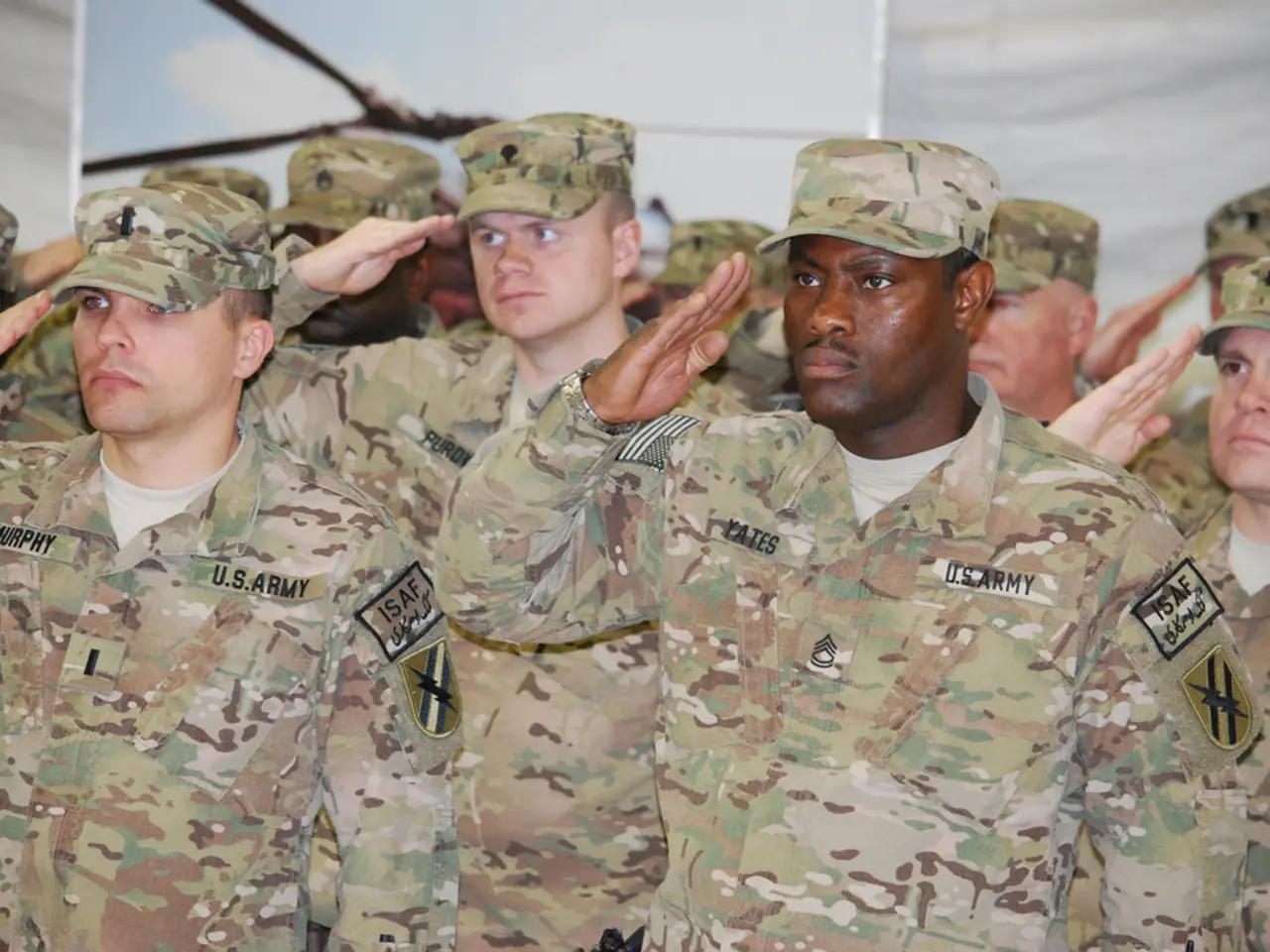Service Term Duration in the Military: Examining Service Obligations
Serving in the U.S. military is a significant decision with far-reaching implications. Here's a breakdown of the standard active duty service commitments for each branch of the military, as well as other essential details to consider before enlisting.
For enlisted personnel, the initial active duty service commitment typically ranges from four to eight years, depending on the branch of service and chosen Military Occupational Specialty (MOS). The Army, for instance, requires a minimum of 2 to 6 years of active duty service, with the total military service obligation usually being 8 years that can include reserve or inactive duty time.
Similarly, the Navy, Air Force, Marine Corps, and Coast Guard have their own standard enlistment lengths. The Navy and Army contracts usually involve 4 to 6 years of active duty service, with a total 8-year military service obligation including reserve time. The Air Force's total military service commitment is 8 years, which can be fulfilled by 4 to 6 years of active duty, coupled with 2 to 4 years of inactive reserve obligation. The Coast Guard usually requires a 4-year active duty service commitment followed by a reserve commitment to complete an 8-year total service obligation.
The Marine Corps, however, has a more flexible active duty commitment, ranging from 2 to 6 years depending on the contract, but all active duty Marines have an inactive reserve obligation after active service.
Officers, on the other hand, typically have an initial service commitment of three to ten years, depending on the commissioning source and chosen branch and specialty. Jobs requiring extensive training, such as those in intelligence, medicine, or engineering, often come with longer service obligations.
Serving in the military is not just a job; it's a commitment with significant responsibilities and potential rewards. Reenlisting offers opportunities for career advancement, higher pay, and continued service to the country, but it also means committing to another term of service.
After active duty, service members often transition into the Reserve Component Obligation (RCO), ensuring a continuous commitment to national defense. The Active Duty Service Obligation (ADSO) is the period spent serving full-time in the chosen branch, ranging from a few years to longer commitments based on job, training, and incentives offered.
The military frequently offers bonuses and incentives to attract recruits into critical career fields or to encourage experienced personnel to reenlist, which typically comes with an extended service commitment. Balancing personal life and military service requires careful planning, open communication with your family, and a strong support system.
Veterans are entitled to a range of benefits, including healthcare, education assistance, home loan guarantees, and employment opportunities. The military provides Transition Assistance Programs (TAPs) to help service members prepare for civilian life, offering workshops on resume writing, job searching, financial planning, and accessing veterans' benefits.
Serving in the military can be both emotionally and physically challenging, with sacrifices and hardships that come with military life. But for many, the sense of camaraderie, the opportunity to serve their country, and the skills they acquire make it a rewarding experience.
The enlistment contract is a legally binding agreement outlining the terms of military service, including the length of active duty commitment. The decision of how long to stay in the military is a personal one, requiring weighing the pros and cons, considering long-term goals, and making an informed decision that aligns with values and aspirations.
An MSO, or Military Service Obligation, represents the total length of time an individual is obligated to serve within the armed forces after enlisting or commissioning. Understanding this obligation is crucial when considering a career in the military.
In summary, while initial active duty commitments can vary mostly between 2 and 6 years depending on the branch and contract, all branches maintain a total military obligation of 8 years that includes active and reserve duty periods. The Air Force and Marines have specifically noted splits between active and reserve years with the Air Force commonly requiring 4 to 6 active years plus 2 to 4 in reserve. The Marine Corps is currently encouraging voluntary early separations for active duty personnel with existing end-of-service dates in fiscal year 2025, but this does not reduce their full commitment for purposes of service credit.
[1] Marine Corps announces voluntary early separations [2] Air Force Active Duty Service Obligation [3] Marine Corps Active Duty Service Obligation
[1] The Marine Corps has initiated voluntary early separations for some active duty personnel, offering a prospect for education-and-self-development and career-development opportunities as they transition into civilian life.
[2] In the Air Force, the total military service commitment is 8 years, which can be fulfilled by 4 to 6 years of active duty service, coupled with 2 to 4 years of inactive reserve obligation, providing a balance between service and personal growth.
[3] The Marine Corps' standard active duty service commitment ranges from 2 to 6 years, but all active duty Marines have an inactive reserve obligation after active service, ensuring continued opportunities for personal development and career advancement.




